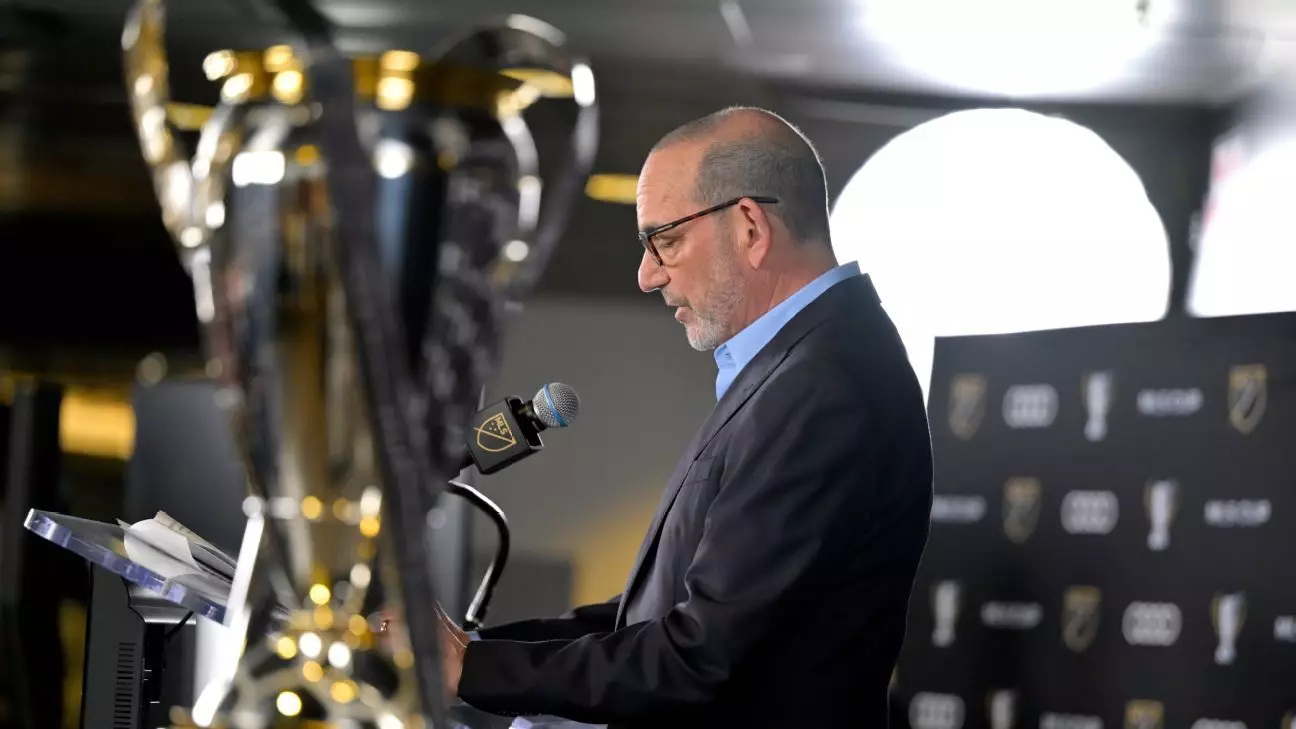In an era of rapid change and adaptation, Major League Soccer (MLS) finds itself grappling with an increasingly densely packed calendar. League Commissioner Don Garber recently underscored the challenges and potential transitions facing the league during his annual State of the League address. The ongoing discussion around aligning the MLS schedule with the European calendar signifies a pivotal moment for American soccer, as the league considers the implications of such a shift while balancing its commitments to existing tournaments and the growing demands from both fans and stakeholders.
Garber pointed out that MLS has previously flirted with the idea of transitioning to a fall-spring format during two key periods—2004-05 and 2014-15—but with limited success. However, as Garber noted in his address, the conversation surrounding a schedule change is gaining momentum. “We are considering this opportunity to change more than ever before,” he stated, indicating that while discussions are ongoing, the complexities involved necessitate further deliberation. The reality is that the traditional February to December calendar is becoming increasingly cluttered with international tournaments, particularly during the summer months.
Competing Interests and the Congestion Challenge
The added strain on the MLS schedule comes not only from league commitments but also from participating in various tournaments, including the Leagues Cup, U.S. Open Cup, and Club World Cup. Garber highlighted that the league will take breaks during significant events, such as the 2026 World Cup and parts of the 2025 Club World Cup, to allow players to compete on the international stage. However, this scheduling necessity has led to logistical challenges, as not all teams can feasibly participate in every tournament given the limited available dates.
“I think it’s good for the club, good for the fans,” Garber noted when discussing the importance of tournament play. Nonetheless, he admitted that with the league expected to host around 30 teams, it would be nearly impossible for every team to compete in every tournament, a challenge that proves increasingly difficult as the league expands. The unfortunate reality is that fewer teams can participate in critical events such as the U.S. Open Cup, which saw only eight teams involved in 2024.
Reassessing the Leagues Cup Format
As MLS navigates these congested waters, Garber revealed that changes to the Leagues Cup format are also on the horizon. The intent is to prioritize matchups between MLS and Liga MX teams, reinforcing the rivalry and competition between the two leagues. This focus aims to enhance the overall fan experience while fostering greater excitement around the matches. Garber affirmed, “We need more MLS versus Liga MX matches”, demonstrating a strategic approach to elevate the profile of the tournament and draw in more viewership.
The MLS landscape is shifting not only in terms of competitions, but the league is also on the rise in terms of attendance. Garber proudly announced that MLS has become the second-most attended league globally, with an astonishing 12.1 million fans engaging with matches. With the forthcoming addition of the 30th team in San Diego next season, MLS continues to grow beyond the scope of many other leagues, positioning itself as a formidable player in the sports world.
One significant driver of MLS’ current popularity can be traced to the remarkable presence of Lionel Messi at Inter Miami. Garber remarked on the ‘phenomenon’ surrounding Messi’s arrival, noting that the Argentine star has drawn attention and large crowds to matches, outperforming expectations. “The popularity of Leo is remarkable,” Garber enthused, highlighting how Messi’s stature positively impacts the league. This ‘Messi effect’ not only attracts larger crowds but also generates enthusiasm and engagement from fans, further solidifying the league’s standing.
The successful partnership with Apple TV, which has entered its second season, adds another layer to MLS’ evolving narrative. While Garber praised viewership numbers during their broadcasts, he remains cautious about quantifying success. “What is the right comparison?” he mused, as he navigated the complexities of gauging success across multiple games on a busy Saturday night. The innovation of destination viewing reflects the evolving landscape of sports media consumption, as MLS looks to engage with fans using new and creative avenues.
Looking ahead, Garber addressed the league’s financial strategies amid its growth trajectory. While there are discussions on enhancing roster spending to foster competitiveness, he conveyed that substantial increases are unlikely in the near future. The intention is to empower teams to make efficient use of their resources and be more strategic with player investments. The ongoing collective bargaining agreement with the Major League Soccer Players Association underscores a commitment to finding solutions that cater to both player aspirations and the long-term sustainability of the league.
As Major League Soccer continues to evolve, it faces a balancing act of managing growing competition while also maximizing opportunities. The league’s ability to adapt to a rapidly changing environment, embrace new partnerships, and navigate financial constraints will be crucial as it seeks to solidify its place in the global sports landscape. The journey ahead promises to be both challenging and dynamic, shaping the future of soccer in the United States for seasons to come.

Leave a Reply